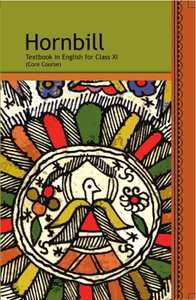Advertisements
Chapters
1.2: A Photograph
2: We’re Not Afraid to Die... if We Can All Be Together
3.1: Discovering Tut: the Saga Continues
3.2: The Laburnum Top
4.1: Landscape of the Soul
4.2: The Voice of the Rain
5: The Ailing Planet: the Green Movement’s Role
6.1: The Browning Version
6.2: Childhood
7: The Adventure
8.1: Silk Road
8.2: Father to Son
9: Note-making
▶ 10: Summarising
11: Sub-titling
12: Essay-writing
13: Letter-writing
14: Creative Writing

Advertisements
Solutions for Chapter 10: Summarising
Below listed, you can find solutions for Chapter 10 of CBSE NCERT for English (Core) - Hornbill.
NCERT solutions for English (Core) - Hornbill 10 Summarising Exercise [Page 96]
Read the text below and summarise it.
The Great Desert Where Hippos Once Wallowed
The Sahara sets a standard for dry land. It’s the world’s largest desert. Relative humidity can drop into the low single digits. There are places where it rains only about once a century. There are people who reach the end of their lives without ever seeing water come from the sky.
Yet beneath the Sahara are vast aquifers of fresh water, enough liquid to fill a small sea. It is fossil water, a treasure laid down in prehistoric times, some of it possibly a million years old. Just 6,000 years ago, the Sahara was a much different place.
It was green. Prehistoric rock art in the Sahara shows something surprising: hippopotamuses, which need year-round water.
“We don’t have much evidence of a tropical paradise out there, but we had something perfectly liveable,” says Jennifer Smith, a geologist at Washington University in St Louis.
The green Sahara was the product of the migration of the paleo-monsoon. In the same way that ice ages come and go, so too do monsoons migrate north and south. The dynamics of earth’s motion are responsible. The tilt of the earth’s axis varies in a regular cycle — sometimes the planet is more tilted towards the sun, sometimes less so. The axis also wobbles like a spinning top. The date of the earth’s perihelion — its closest approach to the sun — varies in cycle as well.
At times when the Northern Hemisphere tilts sharply towards the sun and the planet makes its closest approach, the increased blast of sunlight during the north’s summer months can cause the African monsoon (which currently occurs between the Equator and roughly 17°N latitude) to shift to the north as it did 10,000 years ago, inundating North Africa.
Around 5,000 years ago the monsoon shifted dramatically southward again. The prehistoric inhabitants of the Sahara discovered that their relatively green surroundings were undergoing something worse than a drought (and perhaps they migrated towards the Nile Valley, where Egyptian culture began to flourish at around the same time).
“We’re learning, and only in recent years, that some climate changes in the past have been as rapid as anything underway today,” says Robert Giegengack, a University of Pennsylvania geologist.
As the land dried out and vegetation decreased, the soil lost its ability to hold water when it did rain. Fewer clouds formed from evaporation. When it rained, the water washed away and evaporated quickly. There was a kind of runaway drying effect. By 4,000 years ago the Sahara had become what it is today.
No one knows how human-driven climate change may alter the Sahara in the future. It’s something scientists can ponder while sipping bottled fossil water pumped from underground.
“It’s the best water in Egypt,” Giegengack said — clean, refreshing mineral water. If you want to drink something good, try the ancient buried treasure of the Sahara.
Staff Writer, Washington Post
Solutions for 10: Summarising

NCERT solutions for English (Core) - Hornbill chapter 10 - Summarising
Shaalaa.com has the CBSE Mathematics English (Core) - Hornbill CBSE solutions in a manner that help students grasp basic concepts better and faster. The detailed, step-by-step solutions will help you understand the concepts better and clarify any confusion. NCERT solutions for Mathematics English (Core) - Hornbill CBSE 10 (Summarising) include all questions with answers and detailed explanations. This will clear students' doubts about questions and improve their application skills while preparing for board exams.
Further, we at Shaalaa.com provide such solutions so students can prepare for written exams. NCERT textbook solutions can be a core help for self-study and provide excellent self-help guidance for students.
Concepts covered in English (Core) - Hornbill chapter 10 Summarising are Literature Textbook and Extended Reading Text, Reading Skills, Writing Skills, Grammar.
Using NCERT English (Core) - Hornbill solutions Summarising exercise by students is an easy way to prepare for the exams, as they involve solutions arranged chapter-wise and also page-wise. The questions involved in NCERT Solutions are essential questions that can be asked in the final exam. Maximum CBSE English (Core) - Hornbill students prefer NCERT Textbook Solutions to score more in exams.
Get the free view of Chapter 10, Summarising English (Core) - Hornbill additional questions for Mathematics English (Core) - Hornbill CBSE, and you can use Shaalaa.com to keep it handy for your exam preparation.
